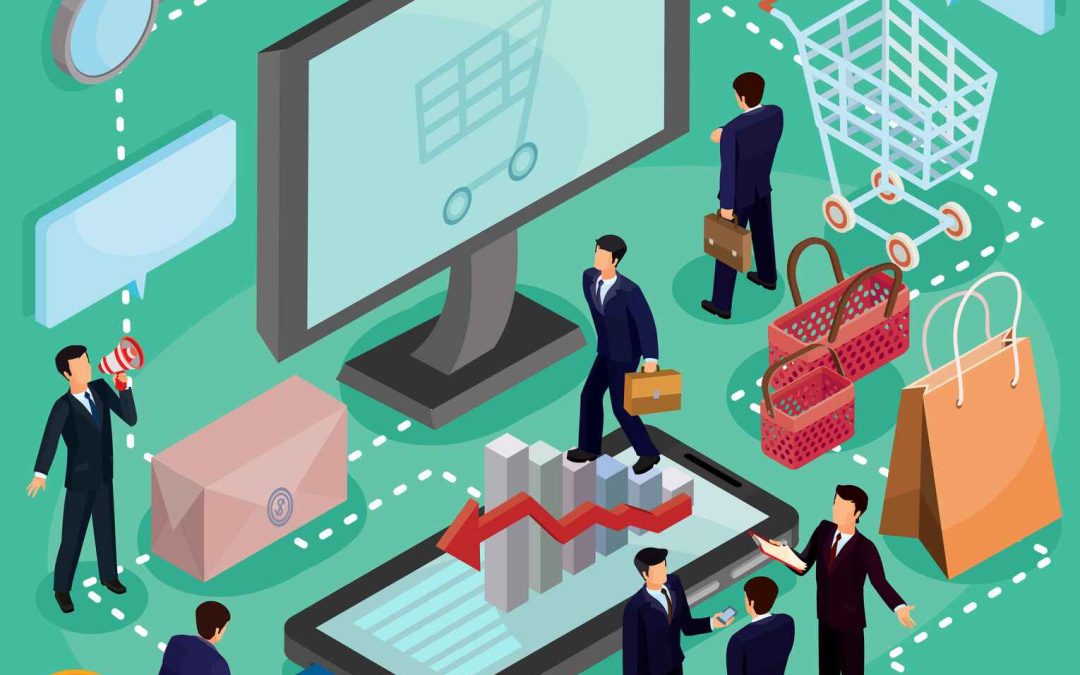These days, businesses have to obey a lot of rules about how to accomplish things swiftly and correctly, and they have to deal with a lot of other firms that want to do the same thing. They also need to be careful about how much money they spend. When you buy items the old-fashioned way, you have to fill out a lot of documents and get things approved by hand. This can cause mistakes, delays, and more effort that costs more and slows things down. These problems have been fixed by e-procurement. E-procurement makes things easier by putting the buying process online. It repairs things, gets people to work together, makes sure everyone follows the rules, and makes everything more open. E-procurement helps businesses develop by making it easier to engage with suppliers, speeding up the approval process, and giving them more information about how much they spend.
What E-Procurement Means for Businesses Right Now
E-procurement is when a business uses digital tools and platforms to conduct all of its purchases. Instead of doing everything by hand, companies utilize automated procurement software to handle requests to buy, approvals, purchase orders, bills, and working with suppliers. Many software programs, such Microsoft Dynamics, SAP, and Oracle, integrate well with these digital platforms. This helps businesses stay within the rules and maintain track of their money.
Businesses place all of their transactions online so that everything is the same, things go smoothly, and there are no problems or mistakes that occurs when things are done by hand. E-procurement connects the finance department, customers, and suppliers. This makes everyone accountable and exposes everyone the facts right now.
The Many Good Things About E-Procurement
E-procurement changes a lot of things, such as how much things cost, how quickly they get done, how to respect the law, and how to work with suppliers. Every benefit is vital for making procurement a useful part of the business.
Improving the performance of the complete business
When workers use traditional procurement, they have to fill out paperwork on paper, get other people to sign them, and then wait days or even weeks for clearance. E-procurement has made this traditional way of doing things entirely digital. Employees can ask for items online, and their bosses can say yes with only one click. Your orders are handled right away by suppliers, which speeds up the process and gets your goods to you faster. This digital speed cuts down on the time it takes to do ordinary tasks, so staff can spend more time on vital things like talking to suppliers and keeping categories up to current.
How to save money by being smart when you shop
Companies that use e-procurement never go broke. These savings come from making sure that all firms use the same catalogs, not letting customers buy illegal goods, and putting all of a business’s contracts with its suppliers into one. People who buy stuff might be able to tell immediately away how much they are spending. This helps consumers keep track of what they already bought, get better deals, and stop spending money they don’t need to. If you bring all of your suppliers together and haggle over a lot of things at once, you could save a lot of money. This way, employees will always shop at stores they know and pay the prices that have already been set.
Following the regulations and lowering the risk
Businesses have to follow rules, even if they are regulations about how to buy things, rules that other people make, or rules about money. E-procurement makes it easy to make sure that following the rules is a typical part of doing business. There are already clear lines of authority, and every activity is automatically logged. This makes it easy to get a list of all the discounts. This keeps firms safe from fraud, making a lot of payments, and disobeying the law. It also makes it easier to undertake audits and less likely that you’ll get in trouble.
Telling the truth and giving people power
With e-procurement, managers and executives can keep track of how much money they are spending, how well their suppliers are doing, and what kinds of things they are buying right now. This information can assist the people in charge keep an eye on budgets, procurement KPIs, and problems before they grow worse. People might take charge when things are like this. This means that procurement is no longer just a support role; it is now a key part of an organization’s strategy.
Strengthening your ties with your suppliers
Businesses need their suppliers to do well. E-procurement helps businesses keep track of when items are due, fix problems, and see how well their suppliers are doing. Businesses may get better prices, make sure deliveries are on time, and keep the quality of their service high by leveraging collaborative digital platforms to develop deeper partnerships. This long-term collaboration fosters trust between the two sides, keeps prices low, and makes sure that the quality of goods and services stays high.
Using machines makes things easier.
E-procurement is great since it handles every step of the buying process. This makes things go faster and minimizes the likelihood of making a mistake. When you ask to buy anything, it goes straight to the people who can say yes. This stops paperwork from getting lost and making things take longer. We submit the purchase order to the vendors as soon as we get it. This makes delivery faster.
Three-way matching makes it easier to deal with bills when you compare purchase orders, delivery receipts, and invoices. This protects clients from spending too much, gets rid of bills that are the same, and fixes problems before they grow worse. Supplier catalogs make things even easier by giving staff lists of items that have previously been approved. This helps keep prices down and makes it easier to provide them what they want. People that buy a lot of products can use real-time analytics dashboards to find out how much they spend, how well their suppliers are doing, and how they might be able to save money.
Connecting ERP and finance systems
E-procurement is a great idea because it works well with both finance and ERP systems. This link makes sure that the information you use to buy products is always the same as what is written down. This helps you keep track of your money and makes your reports more accurate. When finance teams work together, they might be able to better comprehend costs, make better guesses about cash flow, and make fewer mistakes when they keep track of the books. When procurement and finance work together, it’s easier to run a business.
What Makes E-Procurement Systems Different These Days
These days, e-procurement systems include a number of tools that help them expand, stay legal, and be easy to use. These are:
- Intuitive Dashboards: Easy-to-use interfaces that help you go around.
- You can say yes or no to requests and approvals at any time and from any place.
- Role-Based Access Control: This makes sure that only the right people can see private information.
- Cloud-based teamwork: Teams and suppliers can work collaboratively from anywhere.
- Supplier Scoring Modules: With these, you may rate different suppliers and see how well they accomplish their jobs.
- Watch items in real time so you don’t spend more than you planned.
- These features make sure that the buying process is not only quick, but also flexible enough to meet the needs of organizations.
Issues with Traditional Procurement
Before digital procurement, firms had a hard time doing a lot of their job by hand. When people used paper for procedures, they had to write down a lot of information and make large lists of people who needed to agree to things. Customers were ordering the same thing, paying extra, and spending too much money since they couldn’t see what was going on right now. People were more likely to cheat, make mistakes, or breach the rules when they had to enter data by hand. People also utilized broken records to keep track of how well suppliers were doing, which made it tougher to get things done and hold people accountable. These issues indicate that traditional purchasing doesn’t function in today’s fast-paced business world and how crucial e-procurement is for a company’s success and survival.
How to Get the Most Out of E-Procurement
Businesses should follow a few best practices to get the most out of e-procurement. When everyone follows the same guidelines for buying products, it’s easy to make sure that all departments do the same thing. Your staff will be less likely to fight new systems if you instruct them on how to use them. Always make sure that the pricing and amounts of each item in stock in your supplier catalogs are correct. Companies should also look at procurement KPIs like delays in approvals, compliance rates, and cost reductions to determine how they may get better. Lastly, the IT, purchasing, and finance departments all work together to make sure that the systems are always connected, working, and getting better.
E-procurement is used in different ways in different areas.
E-procurement is used by businesses of all sizes and in many different fields. Even if they don’t have a lot of computers, small and medium-sized firms (SMEs) can use cloud-based procurement technologies to grow, save money, and cut costs. Big firms need intricate technology to keep track of a lot of suppliers, do business all over the world, and make sure they meet the rules in every country they do business in. E-procurement also makes groups in the public sector more open, lowers the risk of corruption, and builds trust among everyone involved. Everyone in every department is responsible for making sure that everything operates smoothly with e-procurement.
How to Pick the Best E-Procurement System
Before you can choose the best e-procurement system, you need to know what your company needs. Businesses should make sure that the solution integrates with their current ERP and finance systems so that they can easily share data. Vendor support is equally as important because training, customer service, and frequent updates are what keep a firm running. Put safety first every time. You need to receive a certificate and follow the guidelines for keeping data safe to do this. Lastly, we need to consider about how scalable the solution is so that it can grow with the business and fulfill its needs now and in the future.
What Will Happen to E-Procurement in the Future?
In the future, new technology will make shopping faster, easier, and smarter. AI makes it easier to learn about ways to save money and how risky some suppliers are. Machine learning improves processes by looking at historical clearance data and automating actions that need to be done more than once. Blockchain keeps things safe and makes sure they can’t be modified when they are bought and sold. People will trust you more, and you will be less likely to lie. Cloud-based procurement solutions will be the most popular. When the market changes, they will help businesses from all over the world work together and adapt their strategies swiftly. These trends show that e-procurement is useful and can help you maintain track of your supply chain and identify new ways to buy products.
Concluison
E-procurement has had a huge impact on how businesses work. Businesses may save a lot of money, work more efficiently, follow the regulations, and be more open by automating and digitizing their purchases. It makes the money more precise, helps you get to know your suppliers better, and lowers the risk of fraud. E-procurement is good for both big and small businesses and government agencies since it makes things operate more smoothly and offers them an edge over their competitors in the long run. E-procurement is no longer an option; it’s a must for long-term growth and success in a world where speed and efficiency are what make a firm successful.






